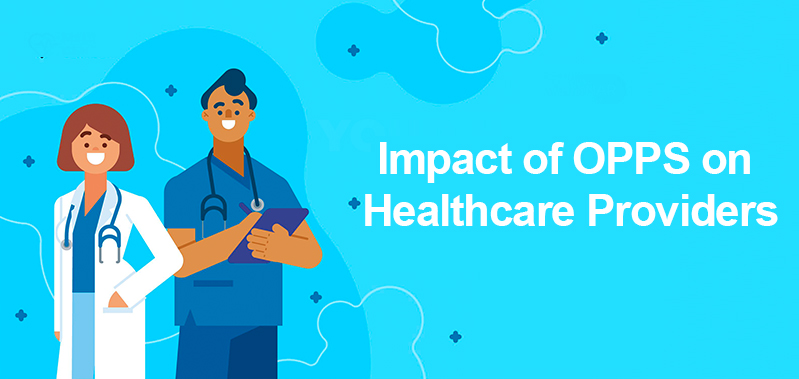
Impact of OPPS on Healthcare Providers
On November 2, 2021, the Centers for Medicare & Medicaid Services (CMS) announced the ASC/hospital outpatient prospective payment system final rule, emphasizing the administration's dedication to price transparency and empowering consumers with the information needed for informed healthcare decisions. This rule promotes safe, effective, and patient-centered care. CMS also released a fact sheet highlighting the key changes.
Hospital Outpatient PPS Final Rule
The Medicare Program has issued a final rule revising the hospital outpatient prospective payment system (OPPS) and ambulatory surgical center (ASC) payment system for 2024, reflecting ongoing improvements. This rule details updates to the payment rates for Medicare services under OPPS and ASC.
Additionally, it refines the Hospital Outpatient Quality Reporting (OQR) Program, ASC Quality Reporting (ASCQR) Program, and Rural Emergency Hospital Quality Reporting (REHQR) Program requirements.
Starting January 1, 2024, the rule introduces payments for certain intensive outpatient services under Medicare. It also enhances requirements for hospitals to publicly disclose their standard charges, reinforcing hospital price transparency.
Changes to the Community Mental Health Centers (CMHC) Conditions of Participation (CoPs) are finalized, outlining requirements for providing intensive outpatient (IOP) services and setting personnel qualifications for Mental Health Counselors (MHCs) and Marriage and Family Therapists (MFTs).
The rule also removes the discussion of the Inpatient Prospective Payment System (IPPS) Medicare Code Editor (MCE) from future annual IPPS rulemaking, starting in FY 2025. Lastly, a technical correction is made to the Rural Emergency Hospital (REH) CoPs regarding the standards for REH designation and certification.
Ambulatory Payment Classifications (APCs)
Ambulatory Payment Classifications (APCs) are essential components of the Outpatient Prospective Payment System (OPPS), which streamlines the payment process for hospital outpatient services. APCs group similar clinical services and items, ensuring standardized payment based on resource use. This system benefits hospital outpatient departments by promoting efficiency and transparency in healthcare reimbursement.
Comprehensive APC (C-APC) Policy
For some expensive primary services, CMS administers a comprehensive APC (C-APC) policy under the OPPS. All relevant goods and services that are listed on the hospital outpatient department claim are covered by this policy. These are seen by CMS as constituting a full and entire service package, and they are supplementary, dependent, supportive, adjunctive, and integral to the primary service. HCPCS codes, which comprise HCPCS Level I (CPT) codes and HCPCS Level II codes, are used to report items, services, procedures, and supplies under the OPPS.
Outlier Payments for High-cost Services
To address the financial risk associated with high-cost and complex procedures, the OPPS provides outlier payments. These payments mitigate the financial impact on hospitals when the cost of a service exceeds specific thresholds. Outlier payments are made when the cost surpasses both the APC payment amount multiplier threshold and a fixed-dollar amount threshold. Annual rulemaking provides further details on these thresholds.
New Technology APCs
New Technology APCs facilitate payment for emerging services until sufficient claims data are collected to assign the service to an appropriate clinical APC. To qualify, a service must be truly new, not fitting into existing HCPCS codes or clinical APCs, and not eligible for transitional pass-through payment. These services must also fall within Medicare benefits under section 1832(a) of the Act and be reasonable and necessary per section 1862(a)(1)(A) of the Act. Once sufficient data are collected (typically two to three years), CMS assigns the service to a clinical APC group. Applications for New Technology APCs can be submitted year-round via MEARISTM, with determinations made quarterly.
Transitional Pass-Through Payments
Transitional pass-through payments provide additional funding for new devices, drugs, and biologicals meeting eligibility criteria for at least two years but no more than three years. These payments ensure patient access to innovative technologies that are not yet reflected in the OPPS payment rates. Pass-through applications are evaluated quarterly, and those not approved initially are reconsidered during annual rulemaking. Approved applications receive a pass-through effective date at the start of the next quarter.
Device Pass-Through Payments
Under Section 1833(t)(6) of the Social Security Act, temporary additional payments are made for medical devices meeting specific criteria. These payments cover the cost difference between the device and the amount included in the APC for the device. Eligible devices receive pass-through payments for two to three years, after which payment for the device is incorporated into the OPPS rate for associated procedures.
Drug and Biological Pass-Through Payments
Similarly, Section 1833(t)(6) provides for transitional pass-through payments for new drugs and biologicals not paid for as hospital outpatient department services as of December 31, 1996, and whose costs are "not insignificant" compared to the OPPS payments for associated services. To qualify, the average cost of the drug or biological must exceed specific thresholds relative to the APC payment amount. These payments are made for two to three years, with the methodology for determining the payment amount detailed in regulation 42 CFR 419.64(d).
APCs under the OPPS streamline hospital outpatient payments, ensuring that services are grouped and paid efficiently. Through policies like C-APCs, outlier payments, new technology APCs, and transitional pass-through payments, CMS supports innovation and mitigates financial risks, promoting access to cutting-edge healthcare services and technologies.





